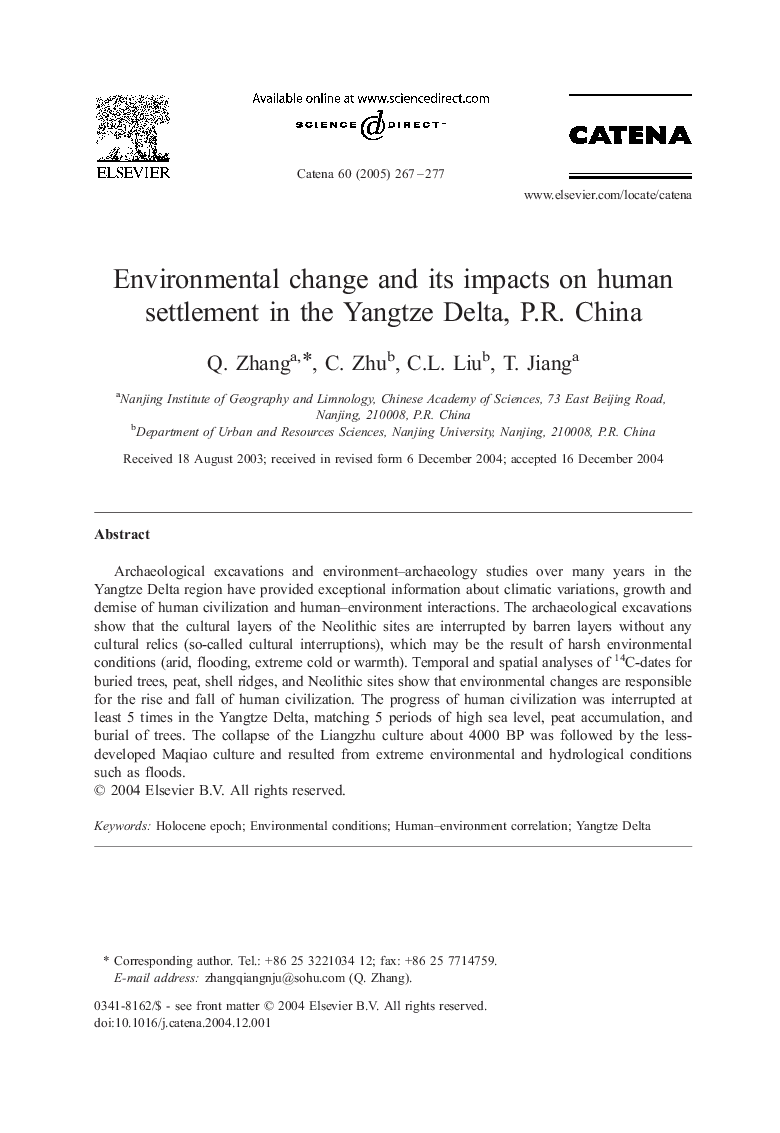| Article ID | Journal | Published Year | Pages | File Type |
|---|---|---|---|---|
| 9489877 | CATENA | 2005 | 11 Pages |
Abstract
Archaeological excavations and environment-archaeology studies over many years in the Yangtze Delta region have provided exceptional information about climatic variations, growth and demise of human civilization and human-environment interactions. The archaeological excavations show that the cultural layers of the Neolithic sites are interrupted by barren layers without any cultural relics (so-called cultural interruptions), which may be the result of harsh environmental conditions (arid, flooding, extreme cold or warmth). Temporal and spatial analyses of 14C-dates for buried trees, peat, shell ridges, and Neolithic sites show that environmental changes are responsible for the rise and fall of human civilization. The progress of human civilization was interrupted at least 5 times in the Yangtze Delta, matching 5 periods of high sea level, peat accumulation, and burial of trees. The collapse of the Liangzhu culture about 4000 BP was followed by the less-developed Maqiao culture and resulted from extreme environmental and hydrological conditions such as floods.
Related Topics
Physical Sciences and Engineering
Earth and Planetary Sciences
Earth-Surface Processes
Authors
Q. Zhang, C. Zhu, C.L. Liu, T. Jiang,
